Last updated: October 29, 2025. Informational only – this is not legal or financial advice – AI Application: Transforming Industries and Everyday Lives
Artificial intelligence (AI) has become a transformative force across various sectors, reshaping how we work, learn, and interact. The term “AI application” refers to the practical use of AI systems and technologies to perform tasks that traditionally required human intelligence. From healthcare to education, finance to customer service, AI applications are revolutionizing processes by automating repetitive tasks, analyzing data, and enhancing decision-making. In this article, we explore the diverse applications of artificial intelligence, highlighting the underlying technologies and their impact on everyday life.
- What are some common examples of AI applications?
- Understanding AI Systems and AI Models
- Applications of Artificial Intelligence in Various Sectors
- AI Technology Enhancing Everyday Lives
- The Role of AI Algorithms and AI Programs in AI Development
- Challenges and Future Prospects of AI Applications
- Conclusion
- Frequently Asked Questions (FAQ)
📖 AI Terminology Quick Reference
| Term | Definition |
| Machine Learning | AI systems that learn and improve from experience without explicit programming |
| Deep Learning | Subset of ML using neural networks with multiple layers to process complex data |
| Neural Network | Computing system inspired by biological brain structure, used in deep learning |
| NLP | Natural Language Processing – AI’s ability to understand and generate human language |
| Computer Vision | AI technology enabling machines to interpret and understand visual information |
| Training Data | Dataset used to teach AI models patterns and relationships |
Understanding AI Systems and AI Models
At the core of AI applications are AI systems and AI models, which enable machines to simulate human intelligence. AI systems are designed to perform specific functions by processing data and executing algorithms, while AI models are the frameworks trained on data to recognize patterns and make predictions. These models often rely on machine learning algorithms and deep learning algorithms, which allow the system to improve its performance over time through experience.
Machine learning algorithms are essential components of AI software, enabling the analysis of structured and unstructured data to extract meaningful insights. Neural networks, inspired by the human brain’s architecture, form the basis of many deep learning models, facilitating complex tasks such as image recognition and natural language processing. The computing power available today has accelerated AI development, making it possible to process vast amounts of data in real time.
🔍 Types of AI: From Narrow to General Intelligence
Weak AI (Narrow AI)
Definition: AI designed to perform specific tasks within a limited context
Examples:
- Virtual assistants (Siri, Alexa)
- Recommendation systems (Netflix, Spotify)
- Image recognition software
- Spam filters
- Chess-playing programs
Status: ✅ Currently Available & Widely Used
Strong AI (General AI)
Definition: AI with human-level intelligence capable of understanding and learning any intellectual task
Characteristics:
- Consciousness & self-awareness
- Abstract reasoning
- Transfer learning across domains
- Emotional intelligence
- Common sense understanding
Status: 🔬 Theoretical / Under Research
Super AI (ASI)
Definition: AI that surpasses human intelligence in all aspects including creativity and problem-solving
Potential Capabilities:
- Superior decision-making
- Advanced scientific breakthroughs
- Creative innovations beyond human capacity
- Self-improvement capabilities
- Solving complex global challenges
Status: 🔮 Hypothetical / Future Concept
📌 Important Note: All current AI applications fall under the “Weak AI” category. Despite impressive capabilities, today’s AI systems are specialized tools designed for specific tasks. Strong AI and Super AI remain theoretical concepts that may take decades or longer to achieve, if ever possible.
Applications of Artificial Intelligence in Various Sectors
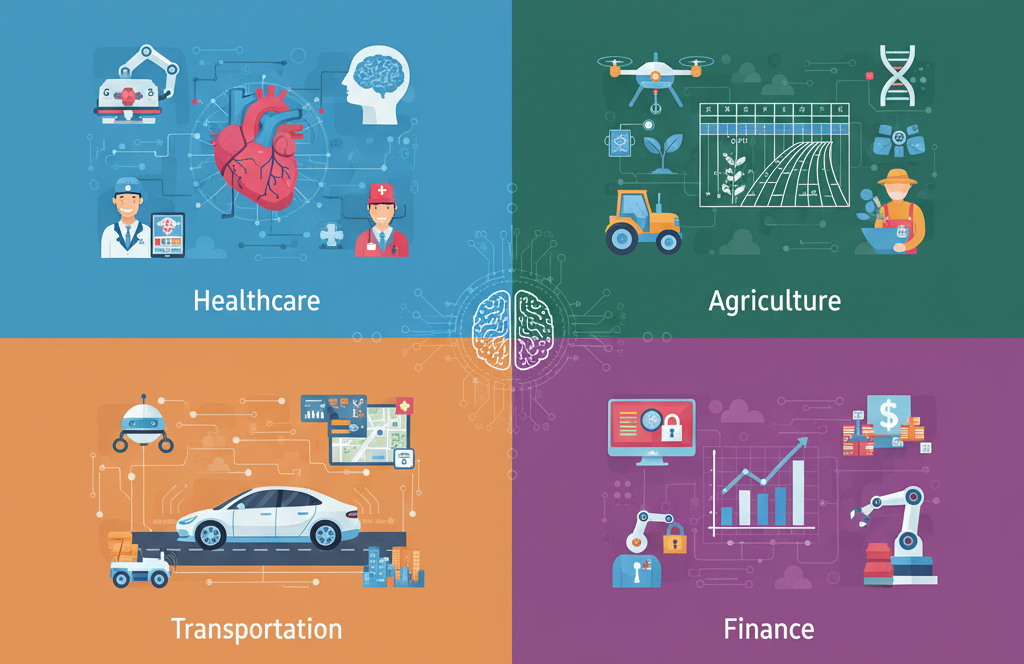
AI applications span a broad spectrum of industries, each benefiting uniquely from AI technologies. In healthcare AI, for example, AI-powered tools analyze health data to assist in diagnosis, predict patient outcomes, and personalize treatment plans. Finance AI utilizes predictive analytics and data analysis to detect fraud, manage risk, and optimize investment strategies.
In education, AI assists through adaptive learning platforms and learning management systems that personalize learning experiences based on student progress and engagement. These platforms leverage AI programs to analyze large datasets, enabling educational institutions to tailor content and pace to individual learners.
Human resources departments utilize AI-powered chatbots and AI applications to automate administrative tasks, streamline recruitment, and enhance employee engagement. Similarly, AI chatbots and virtual assistants improve customer service by handling routine tasks and providing real-time support, reducing the need for human intervention.
Manufacturing benefits from AI applications such as predictive maintenance, quality control through computer vision, and automation of repetitive tasks, increasing efficiency and reducing downtime. Retail leverages AI tools for personalized marketing, inventory management, and enhancing customer experience through virtual assistants.
Transportation and logistics utilize AI for route optimization, autonomous vehicles, and traffic management systems, improving safety and efficiency. Agriculture employs AI technologies for precision farming, crop monitoring, and pest detection, helping to increase yields and reduce resource use.
Energy sectors use AI to optimize grid management, forecast energy demand, and enhance renewable energy integration. In entertainment, AI algorithms personalize content recommendations, assist in content creation, and power interactive gaming experiences.
Legal and compliance sectors adopt AI for document review, legal research, and risk assessment, increasing accuracy and reducing manual workload. Environmental management uses AI for monitoring climate change effects, predicting natural disasters, and supporting sustainability initiatives.
These diverse applications demonstrate how artificial intelligence applications are transforming multiple sectors, driving innovation, and improving operational outcomes across the economy.
🏭 AI Applications Across Industries: At a Glance
| Industry | Key AI Applications | Primary Benefit | Impact Level |
|---|---|---|---|
| 🏥 Healthcare | Diagnosis assistance, patient outcome prediction, personalized treatment, medical imaging analysis | Improved Accuracy | ⭐⭐⭐⭐⭐ |
| 💰 Finance | Fraud detection, risk management, algorithmic trading, credit scoring, investment optimization | Risk Reduction | ⭐⭐⭐⭐⭐ |
| 📚 Education | Adaptive learning platforms, personalized content, automated grading, learning analytics | Personalization | ⭐⭐⭐⭐ |
| 🛍️ Retail | Personalized recommendations, inventory optimization, demand forecasting, virtual assistants | Customer Experience | ⭐⭐⭐⭐ |
| 🏭 Manufacturing | Predictive maintenance, quality control, automation, supply chain optimization | Efficiency Boost | ⭐⭐⭐⭐⭐ |
| 🚗 Transportation | Autonomous vehicles, route optimization, traffic management, predictive maintenance | Safety & Efficiency | ⭐⭐⭐⭐⭐ |
| 🌾 Agriculture | Precision farming, crop monitoring, pest detection, yield prediction | Yield Optimization | ⭐⭐⭐⭐ |
| 💬 Customer Service | AI chatbots, virtual assistants, sentiment analysis, automated ticketing | 24/7 Support | ⭐⭐⭐⭐ |
| ⚖️ Legal | Document review, legal research, contract analysis, compliance monitoring | Time Savings | ⭐⭐⭐⭐ |
| 🎬 Entertainment | Content recommendations, content creation, interactive gaming, personalization | User Engagement | ⭐⭐⭐⭐ |
💡 Key Insight: AI applications with 5-star impact levels are transforming their industries fundamentally, creating new business models and significantly improving outcomes. Industries rated 4 stars are experiencing substantial improvements but with more gradual transformation.
AI Technology Enhancing Everyday Lives
The integration of AI technology into everyday lives is becoming increasingly seamless. AI applications such as search engines use machine learning algorithms to deliver relevant results by understanding human language and preferences. Language translation and machine translation services leverage natural language processing to break down communication barriers globally.
Self-driving cars represent a remarkable AI application, combining computer vision, deep learning algorithms, and real-time data analysis to navigate complex environments safely. These AI systems perform tasks that require human capabilities, such as recognizing obstacles and making split-second decisions.
Moreover, AI-powered tools generate AI-generated content, automate repetitive tasks, and assist in data collection and analysis across various domains. This automation frees up human resources to focus on more strategic activities, enhancing productivity and innovation.
📊 AI Impact: By The Numbers
Average productivity increase in businesses using AI automation
Projected AI contribution to global economy by 2030
Of businesses consider AI a strategic priority for 2025
Reduction in customer service response time with AI chatbots
Source: Industry reports from McKinsey, PwC, and Gartner (2024-2025)
The Role of AI Algorithms and AI Programs in AI Development
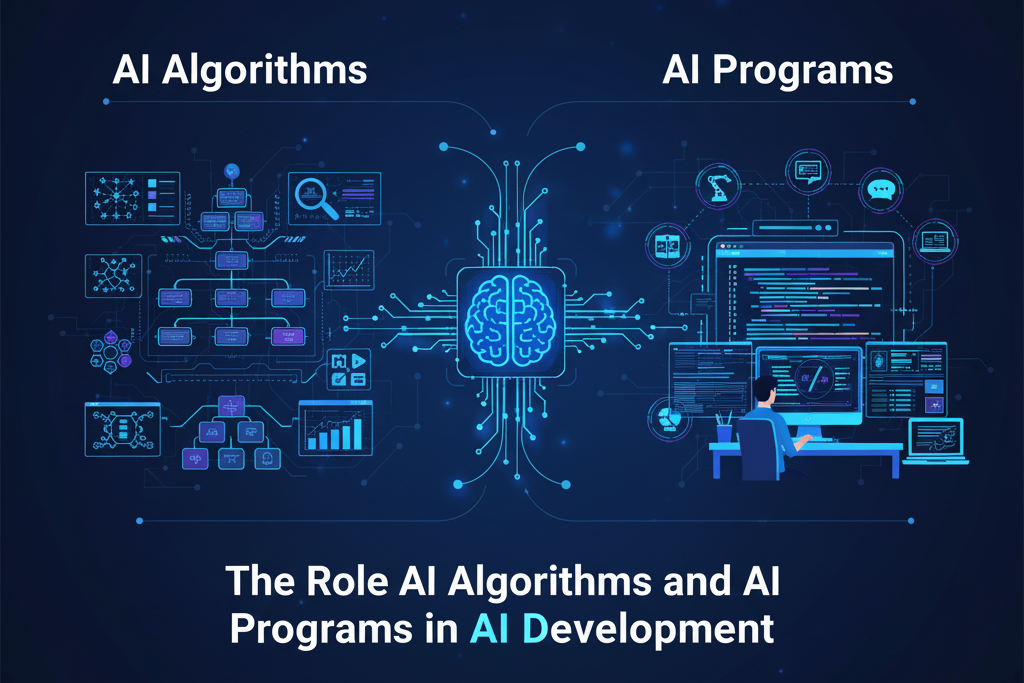
AI algorithms and AI programs form the backbone of AI application development. These algorithms process historical data and real-time data to make informed decisions, predict outcomes, and adapt to new information. Machine learning algorithms, including weak AI models designed for specific tasks, and the pursuit of strong AI or artificial general intelligence, which aims to replicate human understanding comprehensively, drive ongoing AI research.
AI platforms provide developers with tools and frameworks to build and deploy AI systems efficiently. These platforms support data science initiatives by facilitating data analysis, model training, and deployment, enabling organizations to utilize AI effectively.
If you have any idea or need, please do not hesitate to write down on the comment section!
Challenges and Future Prospects of AI Applications
While AI applications offer immense benefits, challenges remain in ensuring ethical use, data privacy, and minimizing bias in AI models. Human intervention remains crucial to oversee AI system outputs and maintain accountability.
⚖️ AI Applications: Balancing Benefits and Challenges
✅ Key Benefits
1. Automation of Repetitive Tasks
Frees human workers for strategic, creative work while AI handles routine processes
2. Enhanced Decision-Making
Data-driven insights enable faster, more accurate business decisions
3. 24/7 Availability
AI systems operate continuously without breaks, increasing service capacity
4. Scalability
Easily scale operations without proportional increase in costs or resources
5. Improved Accuracy
Reduces human error in data processing, analysis, and execution
⚠️ Key Challenges
1. Data Privacy Concerns
Protecting sensitive information while leveraging AI capabilities
2. Algorithmic Bias
AI models can perpetuate or amplify existing biases in training data
3. Job Displacement
Automation may eliminate certain job categories, requiring workforce adaptation
4. High Implementation Costs
Initial investment and infrastructure requirements can be substantial
5. Need for Human Oversight
AI decisions require validation and ethical considerations from humans
🎯 The Path Forward: Successful AI implementation requires balancing innovation with responsibility. Organizations must address challenges proactively through ethical guidelines, transparency, and continuous human oversight while leveraging AI’s transformative benefits.
Looking ahead, advancements in AI development promise more sophisticated AI applications that further bridge the gap between human intelligence and machine capabilities. The evolution of artificial intelligence AI continues to unlock new possibilities in fields such as personalized learning, healthcare diagnostics, and autonomous systems.
Conclusion
AI applications are reshaping industries and enriching everyday lives by automating routine tasks, enhancing data analysis, and supporting informed decisions. From AI-powered chatbots in customer service to adaptive learning platforms in education, the applications of artificial intelligence are vast and growing. As AI technology evolves, its integration into our daily routines will deepen, offering unprecedented opportunities to augment human capabilities and drive innovation across sectors. Embracing AI systems and AI models today paves the way for a smarter, more efficient future.
Frequently Asked Questions (FAQ)
What is an AI application?
An AI application is a software program or system that utilizes artificial intelligence technologies to perform tasks that typically require human intelligence. These tasks include data analysis, decision-making, natural language processing, and automation of repetitive tasks.
How do AI systems and AI models differ?
AI systems refer to the complete setup that performs AI tasks, including hardware and software components. AI models are the trained algorithms within these systems that recognize patterns and make predictions based on data.
What are some common examples of AI applications?
Common AI applications include virtual assistants, chatbots, self-driving cars, adaptive learning platforms in education, fraud detection in finance, and AI-powered tools in healthcare for diagnosis and treatment recommendations.
How does machine learning contribute to AI applications?
Machine learning algorithms enable AI applications to learn from data, improve over time, and make accurate predictions or decisions without being explicitly programmed for each specific task.
What challenges are associated with AI applications?
Challenges include ensuring data privacy, reducing bias in AI models, maintaining ethical use, and the need for human oversight to validate AI system outputs.
What is the future outlook for AI applications?
AI applications are expected to become more sophisticated, offering enhanced personalized learning experiences, improved healthcare diagnostics, autonomous systems, and broader integration into everyday life, driving innovation across industries.
📚 Continue Your AI Learning Journey
🔗
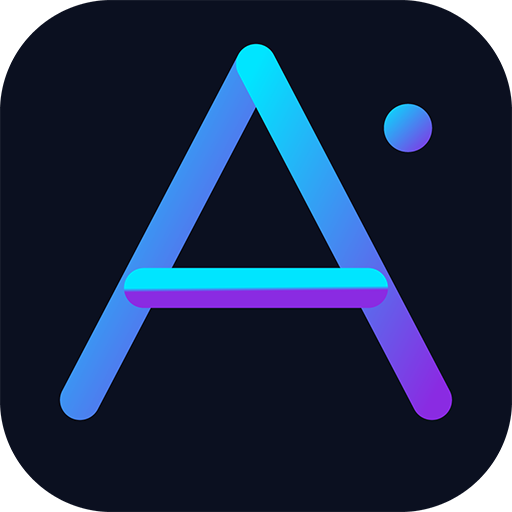

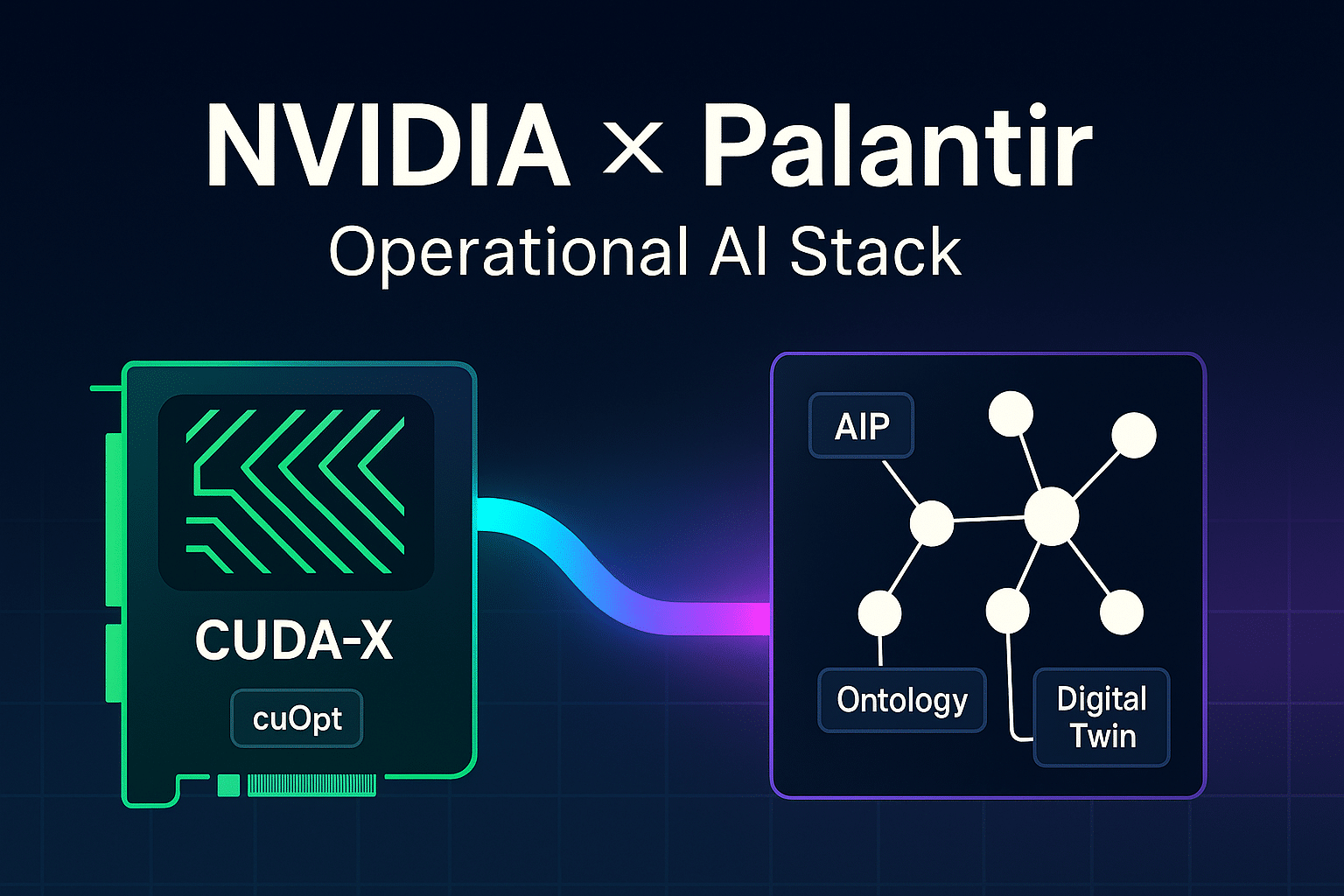
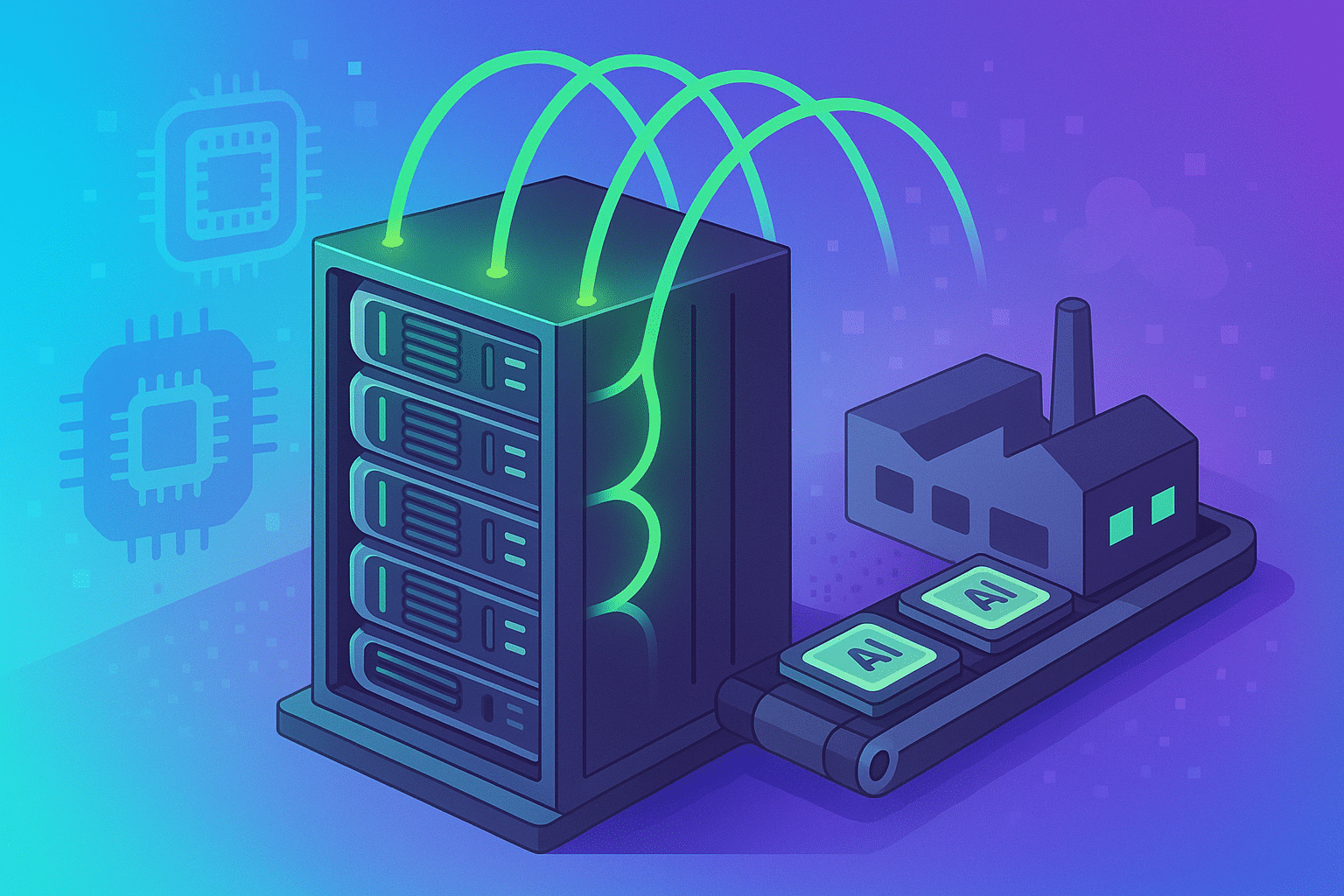
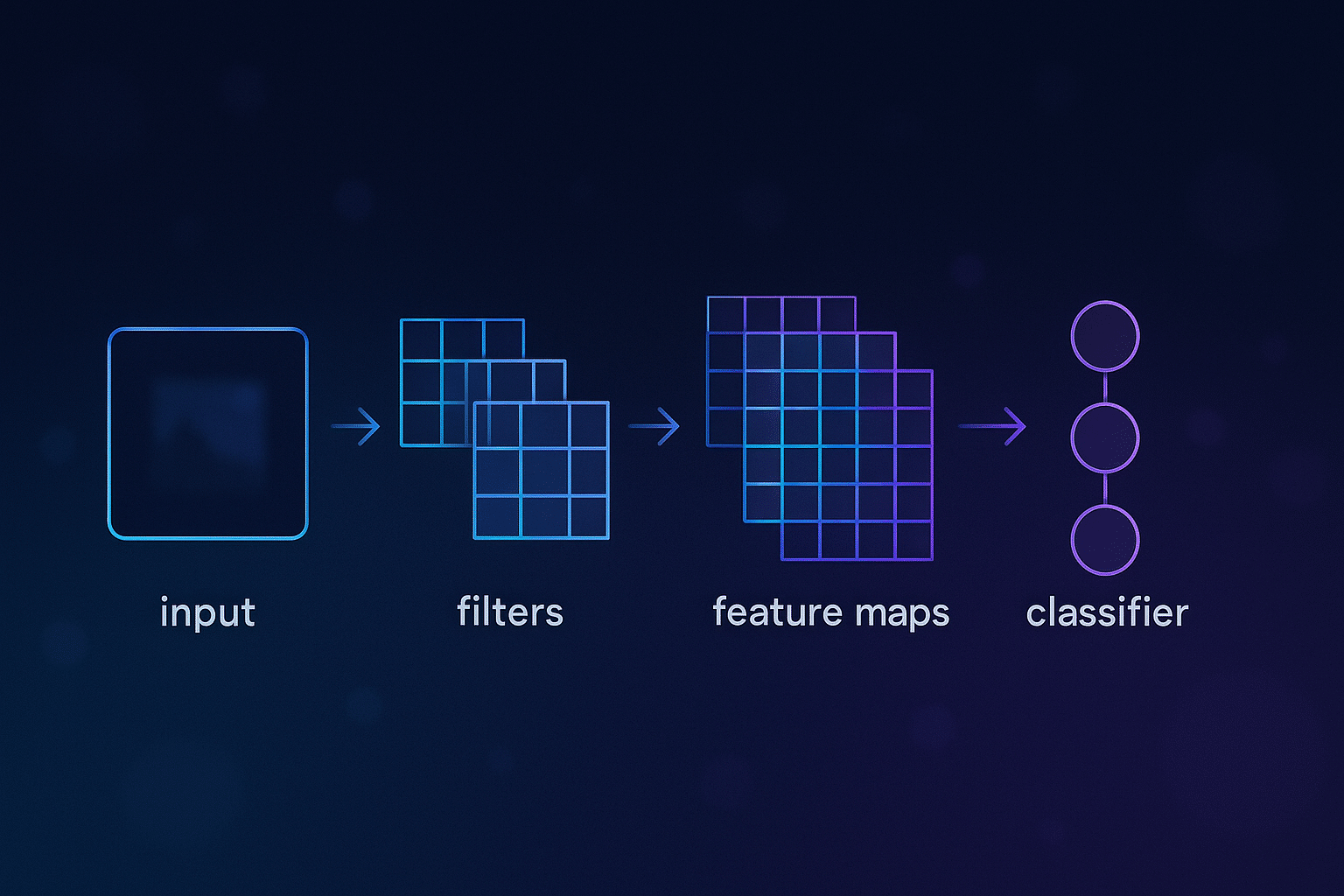
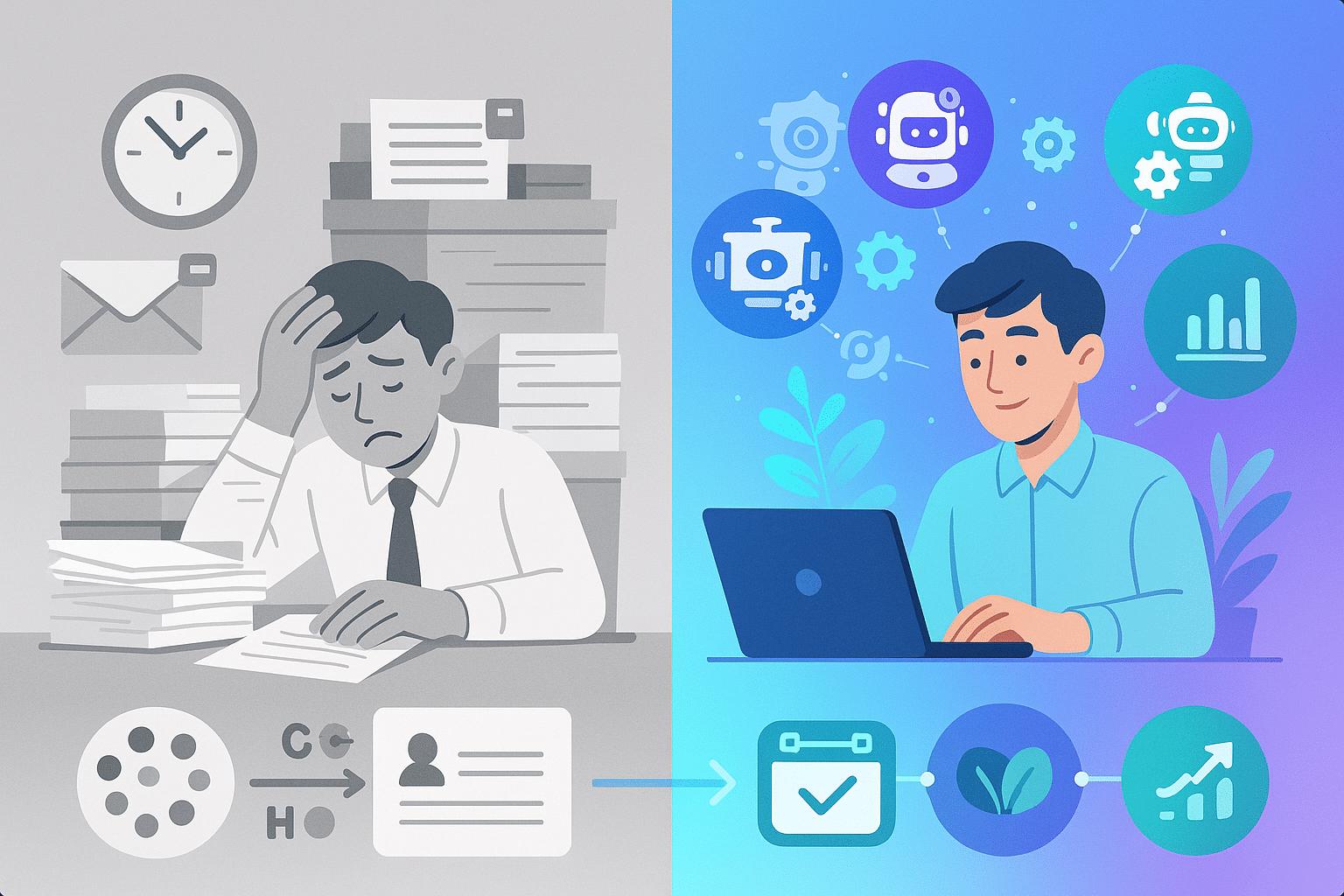
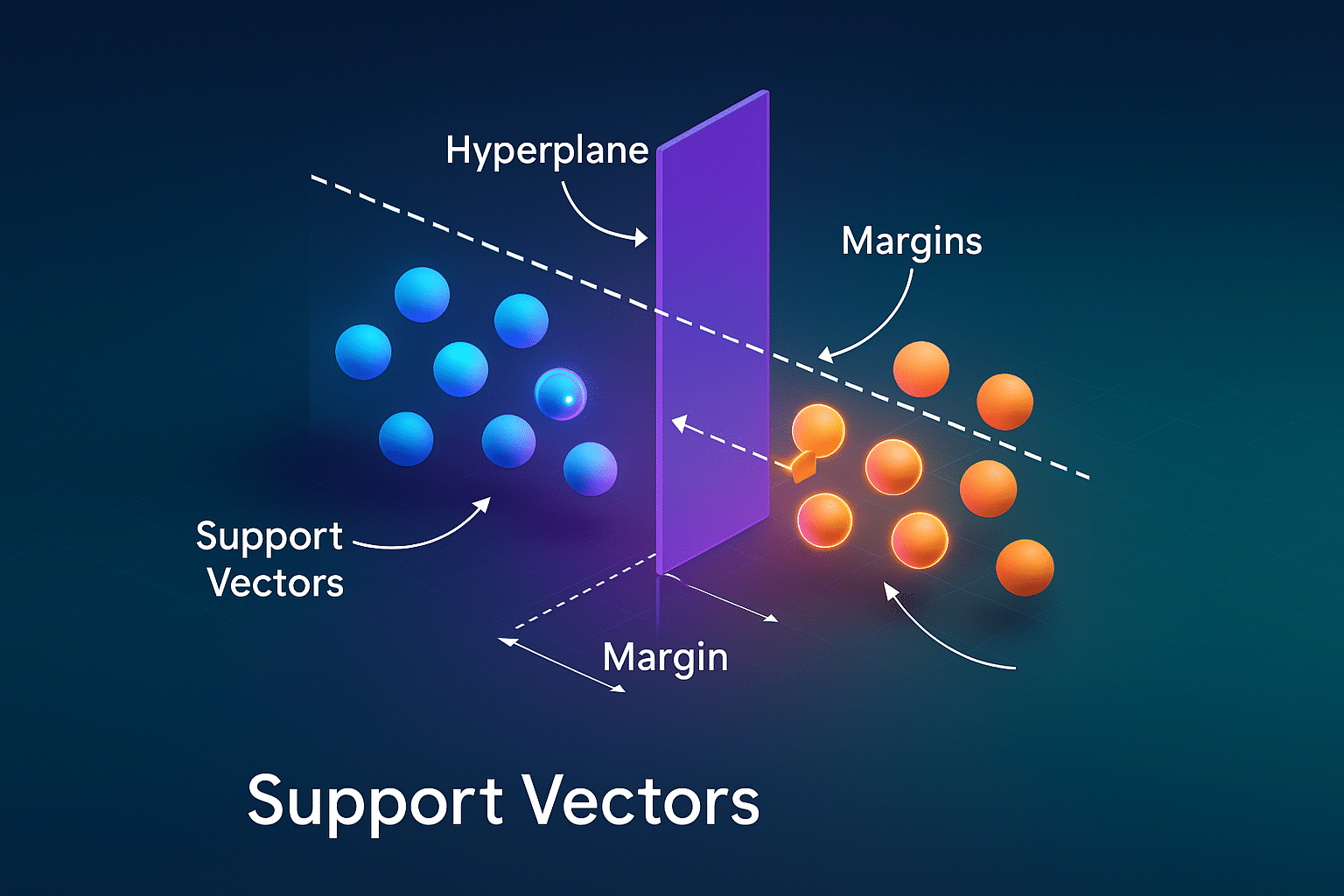
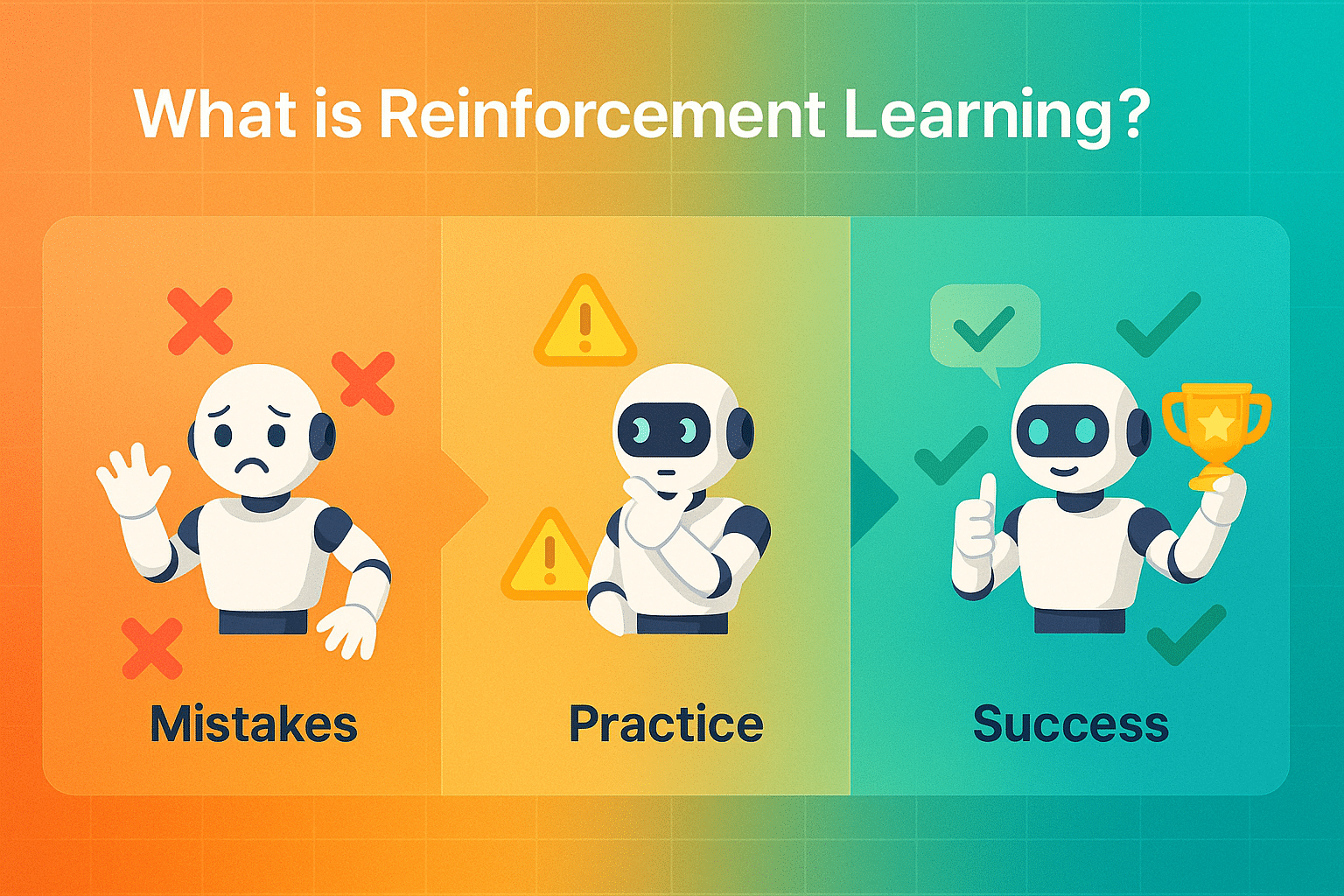
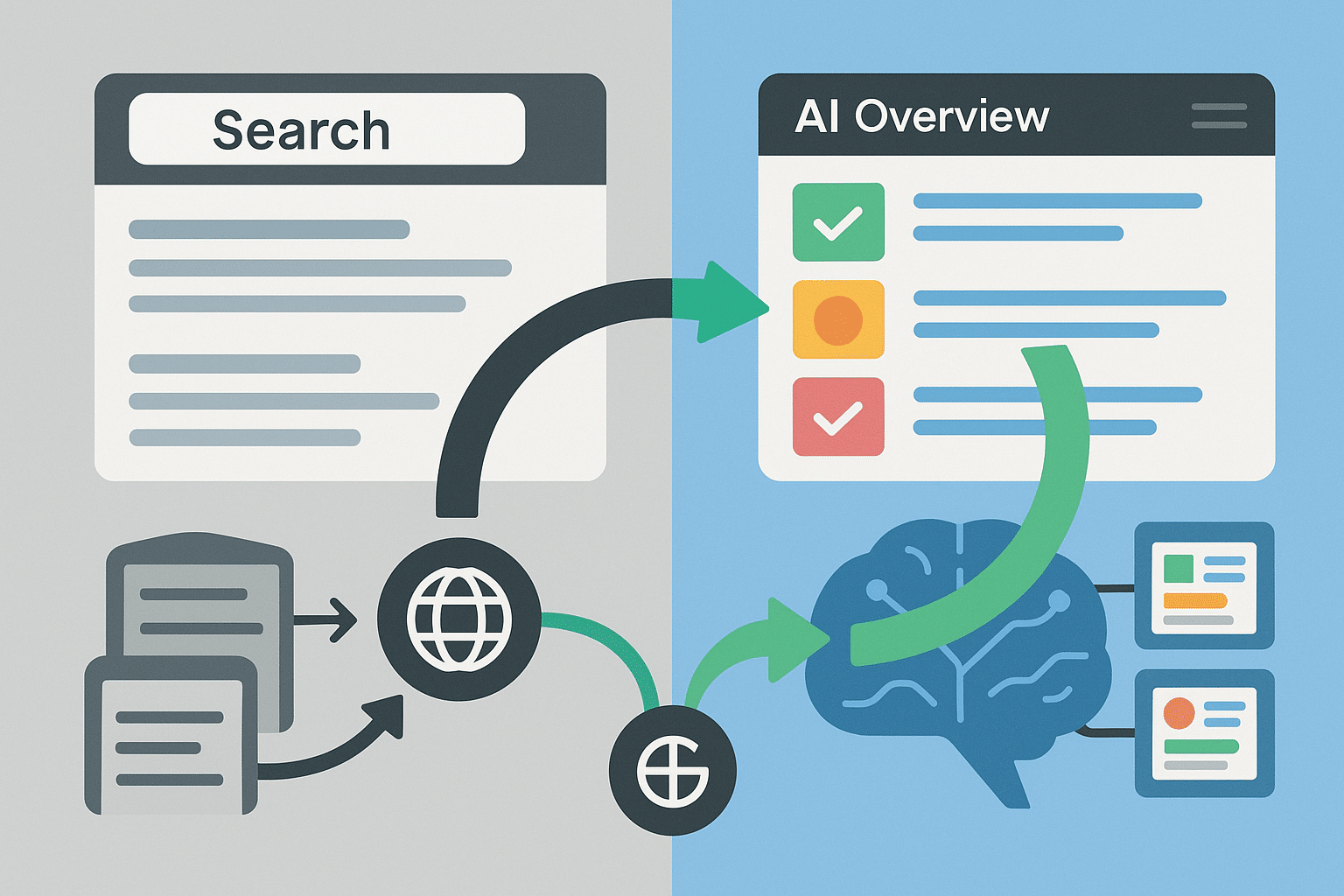
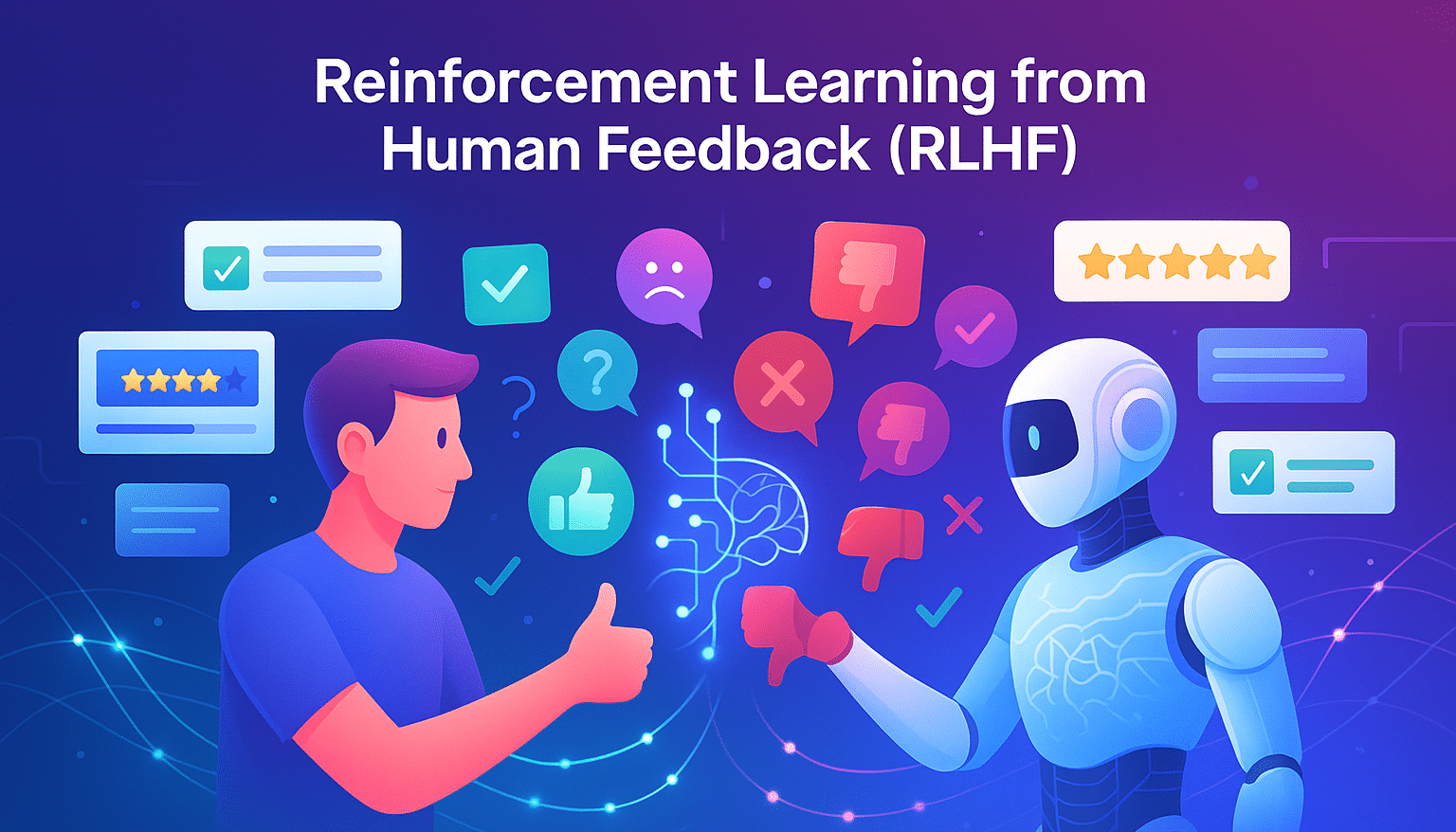
Leave a Reply